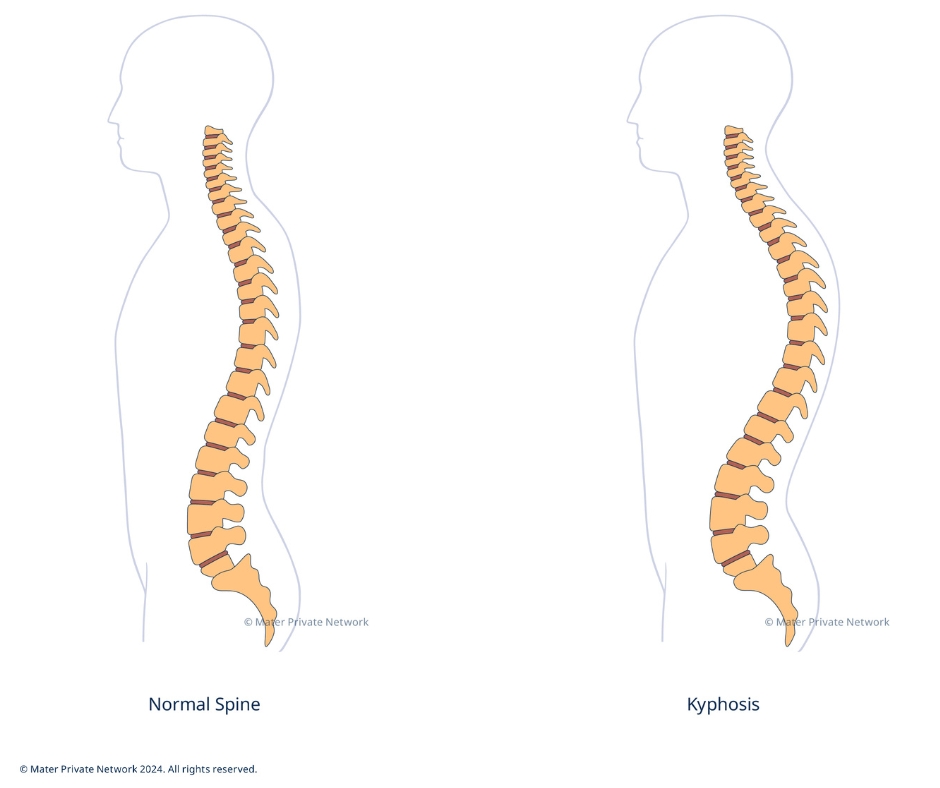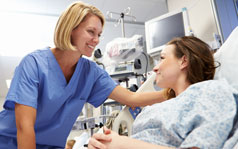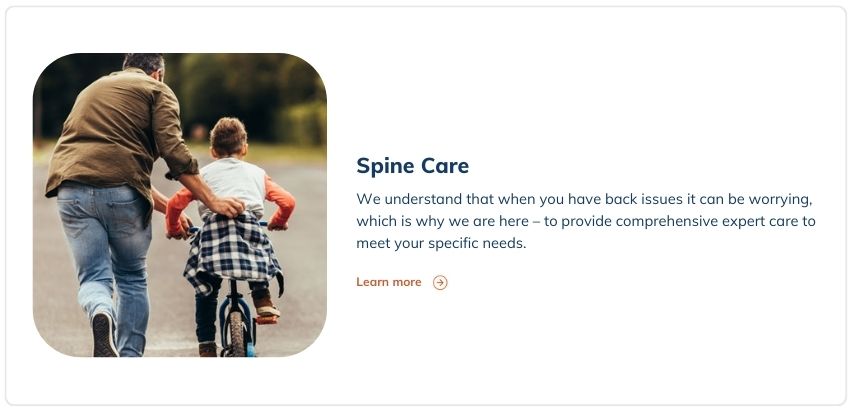Kyphosis
What is kyphosis?
Kyphosis is a progressive spinal disorder where the top of the back appears more rounded or hunched than normal. It is sometimes called hunchback.
Kyphosis affects people of all ages for different reasons, including increased weakness of the spine due to old age, incorrect posture, and malformation of the spine. Postural kyphosis appears more often in teenagers, whose bones are growing rapidly.
Treatment options will vary depending on age, type, and severity of kyphosis. 
What causes kyphosis?
Kyphosis is caused when the vertebrae in the spine become more wedge shaped. This can be caused by:
- Fractures of the vertebrae: broken or fractured vertebrae can result in curvature of the spine. Compression fractures are the most common.
- Osteoporosis: the condition causes the bones to become weakened and can lead to spinal curvature, especially if the weakened vertebrae develop compression fractures.
- Disc degeneration: spinal discs act as cushions between the vertebrae. As we get older, these discs flatten and shrink, which can worsen kyphosis.
- Scheuermann’s disease: a condition that typically begins during the growth spurt before puberty and causes the spine curvature to become rigid.
- Congenital/medical conditions: kyphosis can also happen if the spine doesn’t develop properly before birth, and kyphosis in children is sometimes associated with certain medical conditions, such as Ehlers-Danlos syndrome.
What are the symptoms of kyphosis?
The most obvious symptom of kyphosis is having rounded shoulders or a hump in your upper back. You may also experience tightness in your hamstrings (the muscles in the back of your thighs).
People with severe kyphosis may also suffer from:
- Stiffness or pain in the back and shoulder blades
- Weak, numb, tingling legs
- Extreme tiredness
- Breathing difficulties
- Balance problems
- Bladder incontinence or bowel incontinence
What are the types of kyphosis?
The three most common types of kyphosis are postural kyphosis, Scheuermann’s kyphosis and congenital kyphosis.
Postural kyphosis
Postural kyphosis usually occurs during the teenage years. Poor posture stretches the ligaments and muscles holding the vertebrae in place. This in turn pulls the vertebrae out of their correct position, causing the spine to curve. Postural kyphosis does not usually cause pain or other issues.
Scheuermann’s kyphosis
Scheuermann’s kyphosis (named after the radiologist who identified the condition) happens when your vertebrae, instead of being cylinder or rectangle shaped, are wedge-shaped, causing the spine to curve forwards. This type of kyphosis usually begins during the growth spurt before puberty, and results in a rigid curve, which can be painful.
Congenital kyphosis
Congenital kyphosis occurs when your spine didn’t develop properly before you were born. It can worsen as you grow, and you usually need surgery at a young age to stop the curve from getting worse.
How is kyphosis diagnosed?
Physical examination: your consultant will assess the curve of your spine, symptoms and your medical history.
Spine X-ray: an X-ray of your spine is usually required to determine the extent of your spine’s curvature. The natural curve is between 20 and 45 degrees.
Magnetic resonance imaging (MRI): an MRI may be recommended to check for or to rule out other issues, conditions, or concerns.
CT scan: a CT scan of the spine may be required if more detailed images are required.
Will I need kyphosis surgery?
Treatment for kyphosis depends on your age, the cause and extent of the curvature. If your symptoms are severe, and other treatments are inappropriate or ineffective, you may need surgery.
The most common procedure is spinal fusion, where the surgeon aligns the vertebrae in your spinal column, and then fuses them together in the correct position. This procedure can prevent your spinal curve from getting worse.
What are the complications of kyphosis?
Kyphosis may cause several complications, including:
- Limited movement: kyphosis is caused by weakened back and depending on the severity, this may limit your ability to move.
- Digestive issues: severe kyphosis can compress the digestive tract, causing acid reflux, or difficulty with swallowing.
- Body image problems: as kyphosis is a very visible condition, it might cause patients to feel self-conscious about their bodies.
How can I prevent kyphosis?
Postural kyphosis can be prevented by taking care of your back and, in particular, being aware of your posture.
- Maintain good posture: avoid slouching, sit upright, and ensure that your back is properly supported.
- Avoid heavy lifting: ensure that you do not lift anything that is too heavy for you. When carrying heavy objects, ensure that you carry them in such a way that doesn’t put too much strain on your back.
- Exercise: regular exercise will help strengthen your abdominal and back muscles
- Don’t carry heavy items on your back: use roller cases instead of backpacks – particularly for school bags
- Stay in control of and manage osteoporosis: discuss management techniques with your doctor (diet, lifestyle, exercise, medication).
Frequently asked questions
Is kyphosis reversible?
Kyphosis caused by incorrect posture can be treated through the improvement of habits that caused the condition in the first place. However, if kyphosis is caused by an underlying condition, the effectiveness of treatment will depend on the patient’s age, and the type and severity of kyphosis.
Is kyphosis the same as scoliosis?
While both conditions cause curvature of the spine, they are not the same. Scoliosis causes sideways curvature, often taking the shape of letter ‘S’ or ‘C’. Kyphosis, on the other hand, causes rounding of the back, leading to a slouching posture or a hunchback.










